#Machine Learning Education
Explore tagged Tumblr posts
Text
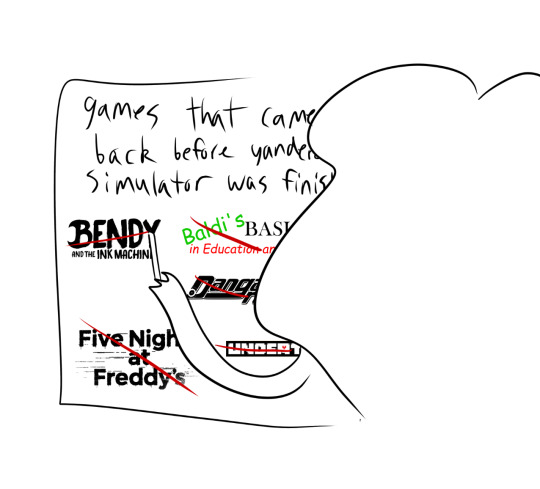
Well.
#bendy and the ink machine#bendy and the dark revival#fnaf#five nights at freddy's#danganronpa#undertale#baldis basics in education and learning#yandere simulator
3K notes
·
View notes
Text
cannot get over how dumb the "education is training you to be a mindless work slave"
i think its mostly there to teach you critical thinking
#Like there are lots of criticisms to give modern day education systems#But writing a 5 paragraph essay on historical events and learning math isnt capitalist sheeple machine generator#This is how you get anti-intellectuals
36 notes
·
View notes
Text

#digital art#artists on tumblr#fnaf#batim#hat in time#tattletail#bbieal#cuphead#sally face#yandere simulator#sans undertale#hollow knight#hello neighbor#doki doki literature club#baldis basics in education and learning#undertale#bendy and the ink machine#five nights at freddy's#indie games#art#jeyart
515 notes
·
View notes
Text
Uhhhhhh Introduction?
Heyyy uhmmm.......... idk.
FANDOMS I CHOSE TO USE FOR THIS ASK BLOG:
Doki Doki Literature Club
Baldi's Basics
Cuphead
Bendy And The Ink Machine
Hello Neighbor
Among Us
Bendy and the dark revival
Cuphead DLC
Amanda the Adventurer (@/Cupheadfan96)
Hello Puppets
Hello Puppets Midnight Show
So these are the options. I'm not adding anymore. I didn't include some popular Fandoms because I don't wanna.
Feel free to ask. But be specific which fandom your asking. There all in their own worlds.
Also in Cuphead and Bendy And The Ink Machine some characters are switched up.
Hehe..... bye.
NEW ASK ABLE THING!
From this list, you can ask for song art of any of these.
Only ships that are in IM.
NO BENDYSTRAW. It makes me sick and uncomfortable.
Character list:
The titles that have the character designs are clickable!!
DDLC
Sayori: Mugman
Monika: Cuphead
Yuri: Bendy
Natsuki: Boris
Player: Holly
Cuphead
Cuphead: Bendy
Mugman: Boris
The Devil: Oswald
King Dice: Felix
BATIM + BATDS
Bendy: Cuphead
Boris: Mugman
Henry: Cannikin
Alice: Cala
Alison: Holly
Butcher gang: dot, wakko, yakko
Sammy Lawrence: Felix
Baldi's Basics
Baldi: Mugman
Player: Cuphead
Principal of the thing: Bendy
Playtime: Boris
This is a Bully: Fanny
Arts and Crafters: Red
1st Prize: Holly
Gotta sweep: Cala
Ñ#Łl / fıłə ñªm3 ² : Alice
Mrs. Pomp: Dot
Cloudy copter: cog holly
Chalkles: yakko
Beans: wakko
Hello Neighbor
Neighbor: Cuphead
Player: Mugman
Among us
Red: Cuphead
Orange: Boris
Yellow: Alice
Dark Green: Black Hat
Blue: Mugman
Cyan: Oswald
Purple: Cala
Pink: Holly
Black: bendy
White: Fanny
Brown: felix
Bendy And The Dark Revival
Bendy: Cuphead
Audrey: Alice
Tom: Mugman
Wilson: Black hat
Betty: Betty bop
Alice: Cala
Alison: Holly
Joey drew: Bendy
Cuphead DLC
Cuphead: Bendy
Mugman: Boris
Chalice: Alice
Chef saltbaker: Cog Holly
Hello Puppets (+Midnight show)
Scout: Holly
Host: Cuphead
Mortimer Handyman: Felix
Riley Ruckus: Canola
Rosco: Boris
Daisy Danger: Mugman
Nick Nack: Cala
Owen: Mickey
Amanda the Adventurer
Amanda: Sarah Songbird
Wooly: Boris
Player: Bendy
Main blog
@alice-the-kittycat-yt
#baldis basics in education and learning#bendy and the ink machine#doki doki literature club#cuphead dont deal with the devil#hello neighbor#fandoms#ahhhhh#blog intro#help help help#babitim#bendy and boris in the inky mystery#bendy and boris the quest for the ink machine#babtqftim#bendy and the dark revival#cuphead the delicious last course#inky mystery#boris and the dark survival#amanda the adventurer#among us#inky mystery au#inkymystery#hello puppets#hello puppets midnightshow#crossover
30 notes
·
View notes
Text
Data Science meets the Many Body Problem
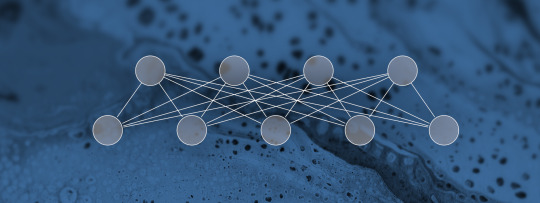
Since the machine learning course I did this semester at Tsinghua university was mainly focused on typical data science applications, I was curious in how far those methods can be applied in physics. Of course it is nothing new that neural networks can in principle also be used for physical applications - however, tensor network methods still seem to be dominant in the field of numerical many body physics. Thus, I decided to dive in a little into the literature about the usage of Restrictive Boltzmann Machines (RBM) in many body physics.
What are RBMs?
Usually, RBMs are used for instance for recommendation tasks (e.g. video recommendations on video platforms) and many more. In general, it is a unsupervised learning technique which makes use of minimizing its "energy". Thus, the intuition behind RBMs is, despite their data science applications, already related to physics: We will see that it is no surprise that "Boltzmann" is part of the name of this method. An RBM utilizes input data, tries to extract meaningful features from it and wants to find the probability distribution over the input. This follows the physical intuition as follows: The RBM is a neural network with two layers, a hidden and a visible layer, where each node can adopt binary values. An example network looks like:

where the x denote the visible nodes, the h the hidden nodes and W denotes the weights between both layers. Note that there are no links in between the nodes of a single layer; this is why these networks are called restricted Boltzmann machines.
The network is governed by a corresponding energy function as:

where we also have the offsets of the single nodes (a for the visible nodes and b for the hidden nodes). Given this energy function, one can determine the probability distribution by the Boltzmann distribution where Z is a partition function, as familiar from classical statistical physics. As usual, the energy is supposed to be minimized, what is done by the learning algorithm of the RBM but this should not explained here since it would go beyond the scope of a brief blog entry. At this point I'd only like to mention that there are some difficulties determining e.g. the partition function (which is intractable in general) and that this requires some sophisticated algortihms. If you're interested in this and how the RBMs work exactly, a neat and far more rigorous introduction into RBMs can be found here.
One side note at this point: RBMs were introduced by Geoffrey Hinton after John Hopfield (a physicist) invented the so-called Hopfield networks which are also such an energy based mechanism, based on the physical intuition of Ising models.
Note that so far we only talked about the RBMs as they are used in data science - despite their physical intuition, they had so far nothing to do with neither quantum mechanics nor the many body problem. This is what comes next.
How can this be linked to condensed matter?
As introduced in [1], an RBM that can represent a quantum many body state would look like this:

In comparison to the previous network we changed the labels from x to σ, where the σ's denote e.g. spin 1/2 configurations, bosonic occupation numbers and so on. For them one has to choose a basis, e.g. the σ^z basis. This configuration can be summarized in the set S. Hence, the visible nodes are the N physical nodes of the system. The M hidden nodes h play the role of auxiliary (spin) variables. The authors describe the understanding of such a neural-network quantum state as follows: "The many-body wave function is a mapping of the N−dimensional set S to (exponentially many) complex numbers which fully specify the amplitude and the phase of the quantum state. The point of view we take here is to interpret the wave function as a computational black box which, given an input manybody configuration S, returns a phase and an amplitude according to Ψ(S)" [1, p.2]. Thus, one gives a certain spin configuration as input and the RBM generates the state, in the following form:

Thus, once can recognize that the form of such a neural-network quantum state adopts a similar form as the aforementioned Boltzmann distribution (exponential of energy function). However, there is additionally a sum over all possible hidden configurations which specifies the full state. After setting a state up in this form, one aim could be to find the ground state corresponding to a certain Hamiltonian, and according to the authors of [1], their RBM method gives decent results for this task!
Similarity to tensor networks
Interesting is, that this framework (even though it appears very different) has some analogous quantities as tensor network states. For example, the representational quality of a neural-network quantum state can be increased by increasing the number of hidden states: Thus, the ratio M/N plays a similar role as the bond dimension of a tensor product state! There are many more similarities, which should not be discussed here but can be found in [3].
Nevertheless, I'd like to mention an important distinction, which is also crucial for tensor network states, because some algorithms (DMRG etc.) can only handle area law states properly. While volume law states have an entanglement entropy which scales with the volume of the partitions of a state, an area law state has a scaling only proportionally with the area of the cut. Area law states can be handled better numerically, because the bond dimension of tensor network states explode for volume law states (more on tensor networks and area law can be found in [4]). According to [2] the difference between area law states and volume law states can be captured in a neat way with RBM states: While volume law states must have full connections between the hidden and physical nodes, an area law state has fewer links - this imposes locality in a sense. The RBM states thus give a neat intuition between the differenece of both kinds of states.


All in all, RBMs seem to be an interesting approach to connect both data science methods and many body physics. It may be that they have strengths which the usual tensor networks approaches lack: for instance, the authors of [2, p.888] claim that it might be possible that RBMs might be able to handle volume law states better than usual tensor network approaches do, which would be of course a major benefit. Since I haven't heard of this approach within the condensed matter framework before, I'm very curious how the importance of this method will evolve in future research!
--- References:
[1] Carleo, Troyer, Solving the Quantum Many-Body Problem with Artificial Neural Networks, arXiv:1606.02318
[2] Melco, Carleo, Carrasquilla, Cirac, Restricted Boltzmann machines in quantum physics, https://doi.org/10.1038/s41567-019-0545-1
[3] Chen, Cheng, Xie, Wang, Xiang, Equivalence of restricted Boltzmann machines and tensor network states, arXiv:1701.04831
[4] Hauschild, Pollmann, Efficient numerical simulations with Tensor Networks: Tensor Network Python (TeNPy), arXiv:1805.00055
#mysteriousquantumphysics#quantum physics#many body physics#education#studyblr#physics#physicsblr#machine learning#neural networks#artificial intelligence#women in science#tsinghua university
80 notes
·
View notes
Text
Making an Artificial Neural Network (ANN) for beginners: A beginner's guide
A summary post of everything (almost) I have learnt about Neural Networks whilst working on my project. Hope this helps some poor soul getting started with no idea where to begin!
Machine Learning (ML) and Artificial Intelligence (AI) have been the hottest new things in town for a while now. Their enigma is perhaps encoded in the fact that one can achieve extraordinary (and in some cases, unprecedented) results with relatively low computing resources and theoretical knowledge. Neural Networks are some of the most popular AI/ML algorithms used these days. Their popularity…
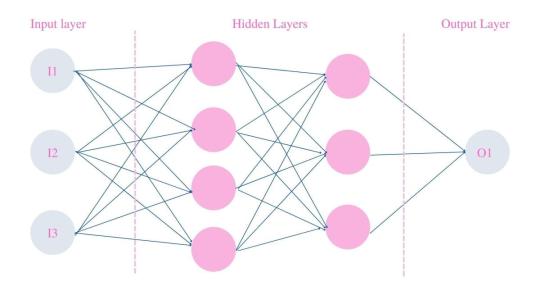
View On WordPress
#AI/ML#ANN#beginner&039;s guide#data science#educational#machine learning#ML algorithm#Neural Network
12 notes
·
View notes
Text
El incalculable valor educativo del vicio a los videojuegos:
(English below)
Hoy no puedo evitar pensar en esas herramientas que "tanto me hicieron perder el tiempo". Se trata, ni más ni menos, que de los videojuegos.
Los videojuegos tienen un gran potencial educativo y de aprendizaje. El "Discovery Tour" de la franquicia de Assassins Creed es un gran ejemplo de ello.

(Captura del Discovery Tour ACOrigins: Serapeo de Alejandría, por Hayden Dingman para NZPcWorld)
En lugar de centrarse en el juego en sí, el "Discovery Tour" se centra en el aspecto educativo del juego, permitiendo a los usuarios explorar y aprender sobre la historia y la cultura de diferentes lugares y épocas de la humanidad. El jugador puede realizar un recorrido virtual, con la posibilidad de interactuar con personajes históricos, aprender sobre eventos y costumbres de la época, y obtener información detallada sobre los escenarios y los objetos que se presentan. Además, ¡incluso puedes saber curiosidades sobre la creación del juego!
Desde cría, siempre pensé que la franquicia tenía un incalculable valor educativo. Ahora que he probado el mundo de la enseñanza, no puedo evitar pensar en las innumerables posibilidades.
Esta herramienta puede ser utilizada en el aula para enseñar a los estudiantes sobre diferentes temas de manera más interactiva y atractiva. El uso de videojuegos y herramientas de realidad virtual puede aumentar la motivación y el compromiso de los estudiantes, lo que puede llevar a una mejor comprensión y retención del material de aprendizaje.
En cuanto a otras áreas de enseñanza, hay muchas posibilidades para el uso de herramientas interactivas como el "Discovery Tour". Por ejemplo, la biología, la geografía, las ciencias sociales, la literatura y muchos otros temas pueden ser explorados y aprendidos a través de juegos y herramientas interactivas.

(Captura del Discovery Tour ACOrigins: Diseño del mapa de Alejandría, por Hayden Dingman para NZPcWorld)
Ahora bien, me encantaría dar un paso más. La revolución que las herramientas de inteligencia artificial están dando —no sólo a las aulas, sino al mundo entero—, hace que el cambio sea todavía más drástico. Imaginaos el "comienzo de una hermosa amistad" entre el machine learning, los entornos interactivos y una potente GUI que deje pasear por cada detalle. ¿Qué será lo próximo?
Siempre pienso en aquel extraño "metaverso" que impulsó la compañía de Zuckerberg. En cuanto a la posibilidad de utilizar herramientas como el "Discovery Tour" en lugar del "metaverso", es importante destacar que estos son conceptos diferentes. El "metaverso" se refiere a un espacio virtual en el que las personas pueden interactuar y realizar actividades similares a las que realizan en el mundo real. Por otro lado, el "Discovery Tour" se centra en la educación y el aprendizaje.
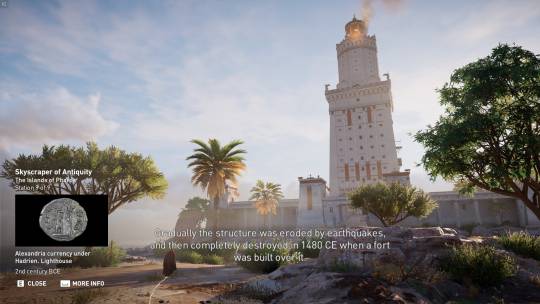
(Captura del Discovery Tour ACOrigins: Faro de Alejandría, por Hayden Dingman para NZPcWorld)
Sin embargo, podría ser una idea interesante si lográramos encontrar el término medio. En mi opinión, la idea del metaverso está curiosa, pero le falta la calidad gráfica que tienen las herramientas como la ya mencionada del Discovery Tour. Ahora bien, ¿y si ese universo virtual ganara en potencia e interactividad? ¿Qué os parecería una clase con Pitágoras en tiempo real?

(Gif de Joey, de la serie Friends, con la expresión "wow")
En resumen, las herramientas de videojuegos y realidad virtual como el "Discovery Tour" tienen un gran potencial educativo y pueden ser utilizadas para enseñar una amplia gama de temas de manera más interactiva y atractiva. Con el avance de la tecnología, es posible que en el futuro veamos el desarrollo de entornos interactivos aún más avanzados para la enseñanza y el aprendizaje.
Y tú, ¿qué opinas?
_________________________________
The incalculable educational value of being addicted to videogames
Today I can't help but think about those tools that made me "waste so much time." I'm talking about videogames.
Video games have great educational and learning potential. The "Discovery Tour" of the Assassins Creed franchise is a great example of this.

(Capture of the Discovery Tour ACOrigins: Serapeum of Alexandria, by Hayden Dingman for NZPcWorld)
Instead of focusing on the game itself, the "Discovery Tour" focuses on the educational aspect of the game, allowing users to explore and learn about the history and culture of different places and periods of humanity. The player can take a virtual tour, with the possibility of interacting with historical characters, learning about events and customs of the time, and obtaining detailed information about the scenarios and objects presented. Besides, you can also learn curious facts about how the game was created!
Since childhood, I always thought that the franchise had incalculable educational value. Now that I have tried the world of teaching, I can't help but think of the countless possibilities.
This tool can be used in the classroom to teach students about different topics in a more interactive and engaging way. The use of video games and virtual reality tools can increase student motivation and engagement, which can lead to better understanding and retention of learning material.
As for other areas of teaching, there are many possibilities for the use of interactive tools like the "Discovery Tour". For example, biology, geography, social sciences, literature, and many other subjects can be explored and learned through games and interactive tools.

(Capture of the Discovery Tour ACOrigins: Design of the map of Alexandria, by Hayden Dingman for NZPcWorld)
Now, I would love to take a step further. The revolution that artificial intelligence tools are bringing - not only to classrooms but to the entire world - makes the change even more drastic. Imagine the "beginning of a beautiful friendship" between machine learning, interactive environments, and a powerful GUI that lets you walk through every detail. What's next?
I always think of that strange "metaverse" that Zuckerberg's company promoted. Regarding the possibility of using tools like the "Discovery Tour" instead of the "metaverse", it is important to note that these are different concepts. The "metaverse" refers to a virtual space in which people can interact and perform activities similar to those they do in the real world. On the other hand, the "Discovery Tour" focuses on education and learning.

(Capture of the Discovery Tour ACOrigins: Lighthouse of Alexandria, by Hayden Dingman for NZPcWorld)
However, it could be an interesting idea if we could find the middle ground. In my opinion, the idea of the metaverse is curious, but it lacks the graphic quality that tools like the aforementioned Discovery Tour have. Now, what if that virtual universe gained in power and interactivity? How about a class with Pythagoras in real time?

(Gif of Joey, from the Friends series, with the expression "wow")
In summary, video game and virtual reality tools like the "Discovery Tour" have great educational potential and can be used to teach a wide range of topics in a more interactive and engaging way. With the advancement of technology, it is possible that in the future we will see the development of even more advanced interactive environments for teaching and learning.
Now it's your turn. What do you thing?
#discovery tour#assassins creed#metaverso#educacion#education#interactive worlds#learning#machine learning
7 notes
·
View notes
Text
straycatj having a full meltdown over meme art is the most funny and unexpected gimmick post breaking out of charcter things and its JUST the first week of 2023 this website rules
#Like sorry bitch art is art even if you hate it#Also no amount of education makes you the final call on what is or isnt art#You could have 3 PhD's in art and 40 years experience but you STILL dont get to determine what constitutes valid art#The things HUMANS produce are art all the time always#Thats why the only thing that ISNT art is shit made by ai/machine learning
17 notes
·
View notes
Text
I decided to nake a meme template since I can't draw.
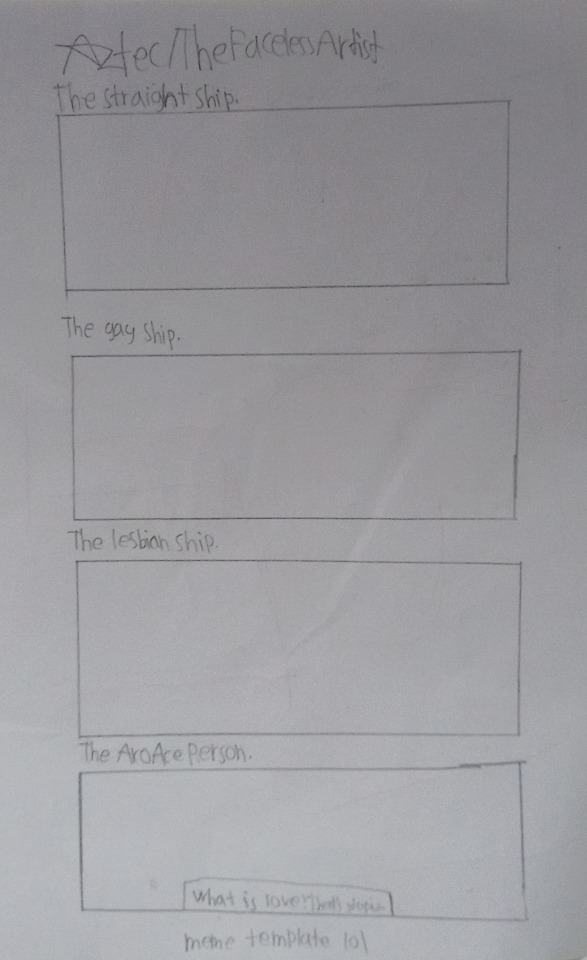
#town of salem#danganronpa#roblox#minecraft#genshin impact#batim#bendy and the ink machine#oc#meme template#AND YES IM TAGGING THE FANDOMS I KNOW#the owl house#Undertale#undertale#baldis basics in education and learning#youtube
19 notes
·
View notes
Text
INDIE CHRISTMAS 😎⛄🧑🎄🎄🦌

Christmas is almost here, and everyone is getting ready, even these guys.(Really hope you guys like 😊)
#bendy and the ink machine#poppy playtime#baldis basics in education and learning#little nightmares#tattletail#freddy fazbear#christmas
9 notes
·
View notes
Text
Top 13 Python Libraries Every Data science Aspirant Must know!
Python has rapidly become the go-to language in the data science space and is among the first things recruiters search for in a data scientist’s skill set, there’s no doubt about it. It has consistently ranked top in global data science surveys and its widespread popularity only keeps on increasing!

But what makes Python so special for data scientists?
Just like our human body consists of multiple organs for multiple tasks and a heart to keep them running, similarly, the core Python provides us with the easy easy-to-code, object-oriented, high-level language (the heart). We have different libraries for each type of job like Math, Data Mining, Data Exploration, and visualization(the organs). learn with these resources Best Python Books
It is of utmost importance that we master each and every library, these are the core libraries and these won’t be changed overnight. The AI and ML BlackBelt+ program help you master these 13 libraries along with many more.
That’s not all, you’ll get personalized mentorship sessions in which your expert mentor will customize the learning path according to your career needs.
Let us learn about the Top 13 Python libraries for data science that you must master!
Before starting out, I have a bonus resource for you! Python is a diverse language and it is hard to remember each and every line of syntax so here’s the link to the Python cheatsheet to help you out-
Math
NumPy
NumPy is one of the most essential Python Libraries for scientific computing and it is used heavily for the applications of Machine Learning and Deep Learning. NumPy stands for NUMerical PYthon. Machine learning algorithms are computationally complex and require multidimensional array operations. NumPy provides support for large multidimensional array objects and various tools to work with them.
Various other libraries which we are going to discuss further like Pandas, Matplotlib and Scikit-learn are built on top of this amazing library! I have just the right resource for you to get started with NumPy –
SciPy
SciPy (Scientific Python) is the go-to library when it comes to scientific computing used heavily in the fields of mathematics, science, and engineering. It is equivalent to using Matlab which is a paid tool.
SciPy as the Documentation says is – “provides many user-friendly and efficient numerical routines such as routines for numerical integration and optimization.” It is built upon the NumPy library. Learn new skills with Best Python Programming Books
Data Mining
BeautifulSoup
BeautifulSoup is an amazing parsing library in Python that enables web scraping from HTML and XML documents.
BeautifulSoup automatically detects encodings and gracefully handles HTML documents even with special characters. We can navigate a parsed document and find what we need which makes it quick and painless to extract the data from the webpages. In this article, we will learn how to build web scrapers using Beautiful Soup in detail.
Scrapy
Scrapy is a Python framework for large scale web scraping. It gives you all the tools you need to efficiently extract data from websites, process them as you want, and store them in your preferred structure and format.
Data Exploration and Visualization
Pandas
From Data Exploration to visualization to analysis – Pandas is the almighty library you must master!
Pandas is an open-source package. It helps you to perform data analysis and data manipulation in Python language. Additionally, it provides us with fast and flexible data structures that make it easy to work with Relational and structured data. Learn advanced concepts with Best book to learn python
Matplotlib
Matplotlib is the most popular library for exploration and data visualization in the Python ecosystem. Every other library is built upon this library.
Matplotlib offers endless charts and customizations from histograms to scatterplots, matplotlib lays down an array of colors, themes, palettes, and other options to customize and personalize our plots. matplotlib is useful whether you’re performing data exploration for a machine learning project or building a report for stakeholders, it is surely the handiest library!
Plotly
Plotly is a free and open-source data visualization library. I personally love this library because of its high quality, publication-ready and interactive charts. Boxplot, heatmaps, bubble charts are a few examples of the types of available charts.
It is one of the finest data visualization tools available built on top of visualization library D3.js, HTML, and CSS. It is created using Python and the Django framework. So if you are looking to explore data or simply wanting to impress your stakeholders, plotly is the way to go!
Seaborn
Seaborn is a free and open-source data visualization library based on Matplotlib. Many data scientists prefer seaborn over matplotlib due to its high-level interface for drawing attractive and informative statistical graphics.
Seaborn provides easy functions that help you focus on the plot and now how to draw it. Seaborn is an essential library you must master.
Machine Learning
Scikit Learn
Sklearn is the Swiss Army Knife of data science libraries. It is an indispensable tool in your data science armory that will carve a path through seemingly unassailable hurdles. In simple words, it is used for making machine learning models.
Scikit-learn is probably the most useful library for machine learning in Python. The sklearn library contains a lot of efficient tools for machine learning and statistical modeling including classification, regression, clustering, and dimensionality reduction.
Sklearn is a compulsory Python library you need to master. Analytics Vidhya offers a free course on it. You can check out the resources here
PyCaret
Tired of writing endless lines of code to build your machine learning model? PyCaret is the way to go!
PyCaret is an open-source, machine learning library in Python that helps you from data preparation to model deployment. It helps you save tons of time by being a low-code library.
It is an easy to use machine learning library that will help you perform end-to-end machine learning experiments, whether that’s imputing missing values, encoding categorical data, feature engineering, hyperparameter tuning, or building ensemble models. Here’s an excellent resource for you to learn PyCaret from scratch Learn basick skills with best python book for beginners
TensorFlow
Over the years, TensorFlow, developed by the Google Brain team has gained traction and become the cutting edge library when it comes to machine learning and deep learning. TensorFlow had its first public release back in 2015. At the time, the evolving deep learning landscape for developers & researchers was occupied by Caffe and Theano. In a short time, TensorFlow emerged as the most popular library for deep learning.
TensorFlow is an end-to-end machine learning library that includes tools, libraries, and resources for the research community to push the state of the art in deep learning and developers in the industry to build ML & DL powered applications.
Keras
Keras is a deep learning API written in Python, which runs on top of the machine learning platform TensorFlow. It was developed with a focus on enabling fast experimentation. According to Keras – “Being able to go from idea to result as fast as possible is key to doing good research.”
Keras is preferred over TensorFlow by many, due to its much better “user experience”, Keras was developed in Python and hence the ease of understanding by Python developers. It is simple to use and yet a very powerful library.
PyTorch
Many data science enthusiasts hail Pytorch as the best deep learning framework (that’s a debate for later on). It has helped accelerate the research that goes into deep learning models by making them computationally faster and less expensive.
PyTorch is a Python-based library that provides maximum flexibility and speed. Some of the features of Pytorch are as follows –
Production Ready
Distributed Training
Robust Ecosystem
Cloud support
End Notes
Python is a powerful yet simple language for all of your machine learning tasks.
In this article, we discussed 13 libraries that will help you achieve your data science goals like maths, data mining, data exploration, and visualization, machine learning and Advanced python Book
#python#machinelearning#machine learning#tech#technology#tech tips#education#programming#coding#books#books & libraries#kindle
62 notes
·
View notes
Text
youtube
Ever wonder how Machine Learning AI works? Here's a very quick overview.
--- youtube.com/watch?v=eR19j7332vU
#computer science#machine learning#AI#artificial intelligence#neural networks#science#learning#educational#video#Youtube
2 notes
·
View notes
Text
#tumblr polls#tumblr poll#polls#poll#fnaf#fnaf 1#bendy and the ink machine#batim#hello neighbor#baldis basics in education and learning
2 notes
·
View notes
Text
Chat stuff
Baldi's Basics:

Mugman: Oh hi! Welcome to my school house
------
Cuphead:
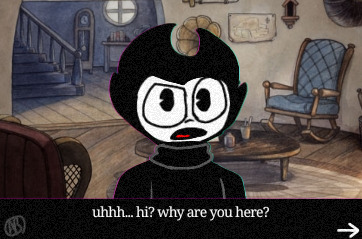
-------
Bendy and the ink machine:
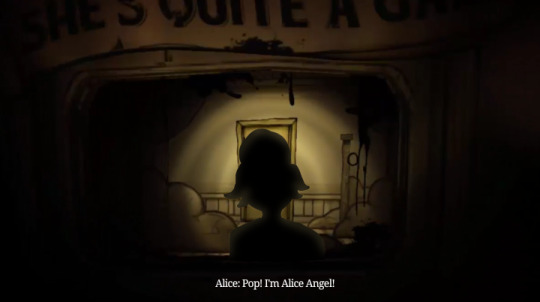
--------
Hello Neighbor:

Cuphead: Now stay out!
------
Doki doki literature club:

------
Among us:
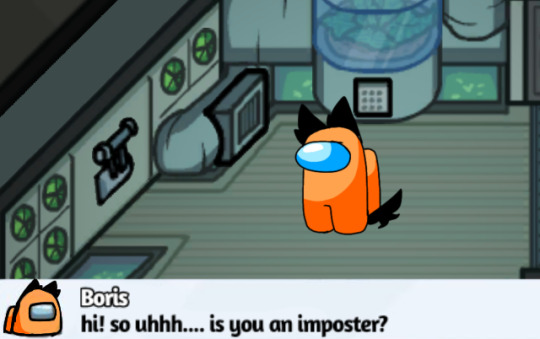
______
If you haven't noticed, they are all in a different style ;)
#babitim#baldis basics in education and learning#bendy and boris in the inky mystery#cuphead dont deal with the devil#doki doki literature club#bendy and the ink machine#hello neighbor#babtqftim
23 notes
·
View notes
Text
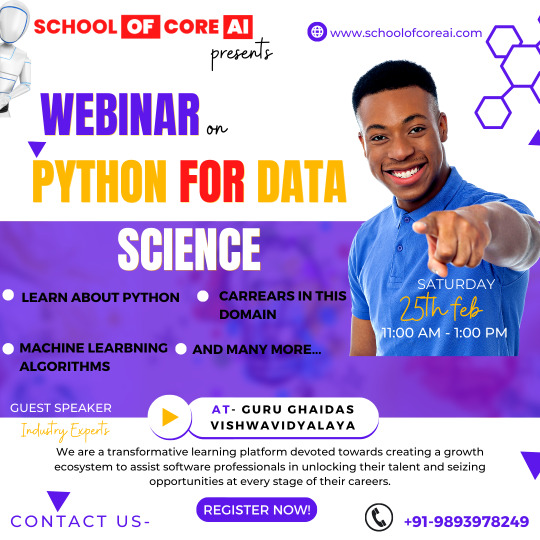
Head to School of Core AI for the best online courses for Artificial Intelligence, Machine Learning, and Data Science! Our courses are designed to provide you with a comprehensive knowledge in the field and prepare you for successful and fulfilling career. Learn from industry-experts, get certified, and unlock your potential! Get started today and take your career to the next level!
#AI#ML#Robotics#OnlineCourses#SchoolofCoreAI#Education#machine learning#data science#code#artificial intelligence
2 notes
·
View notes